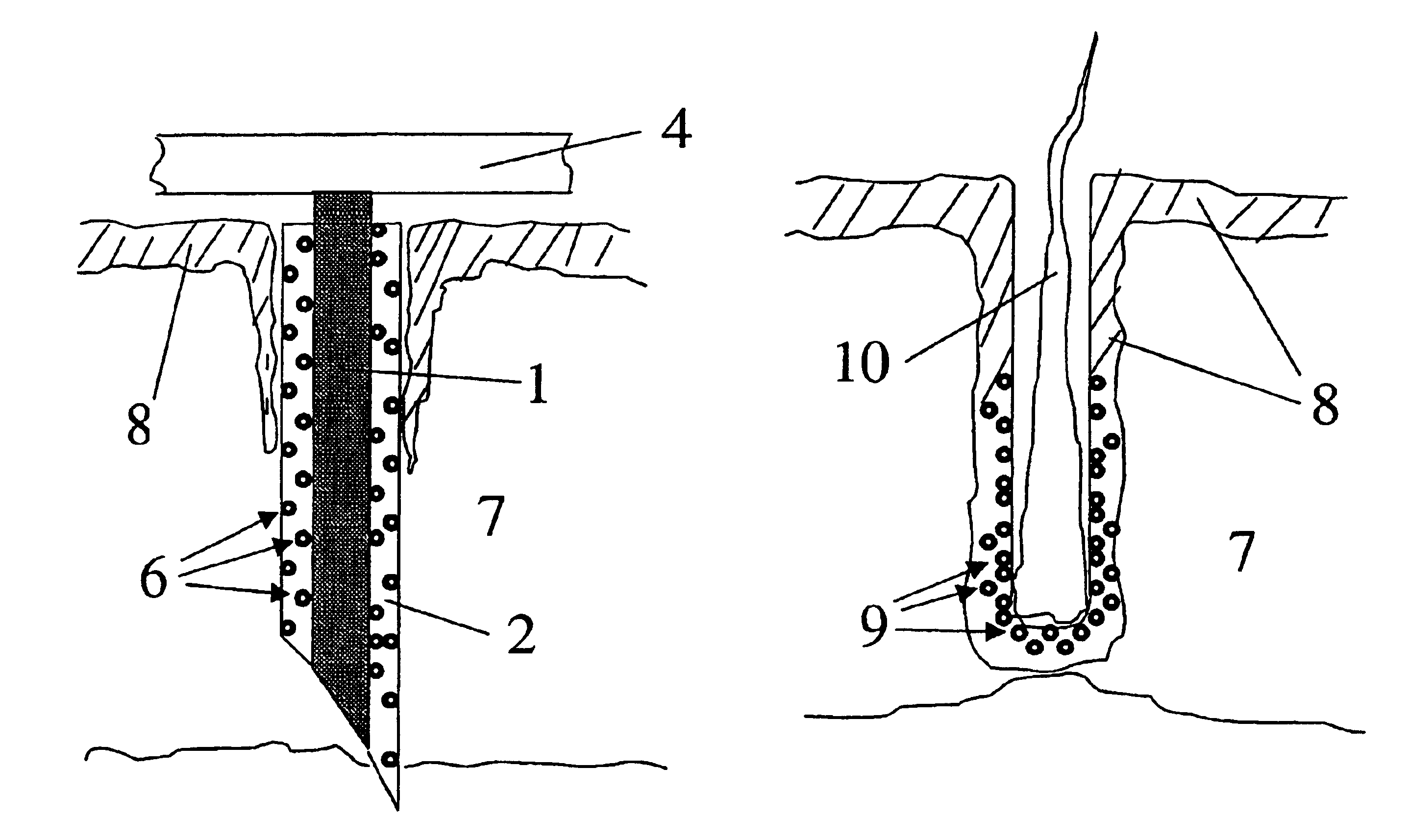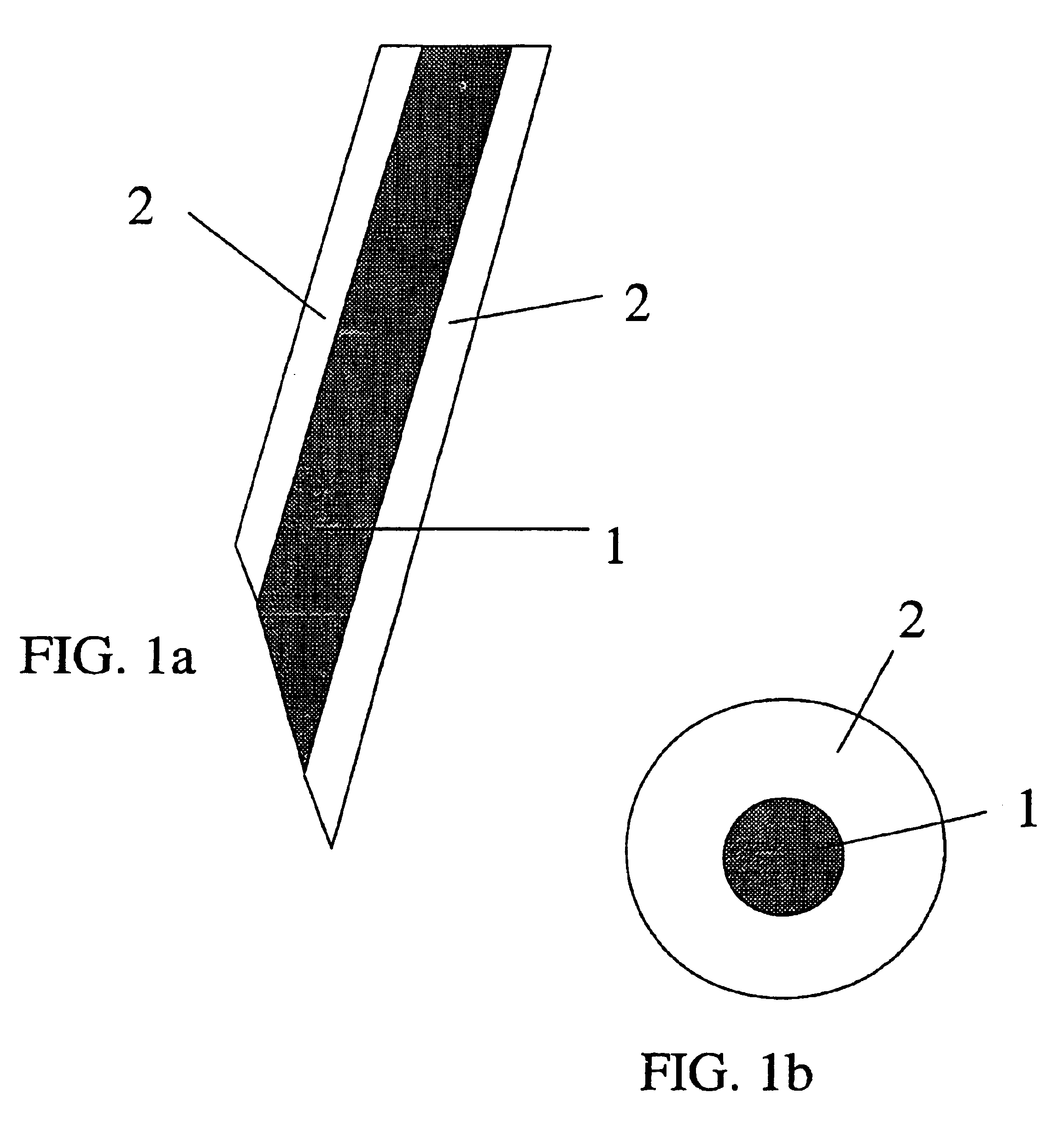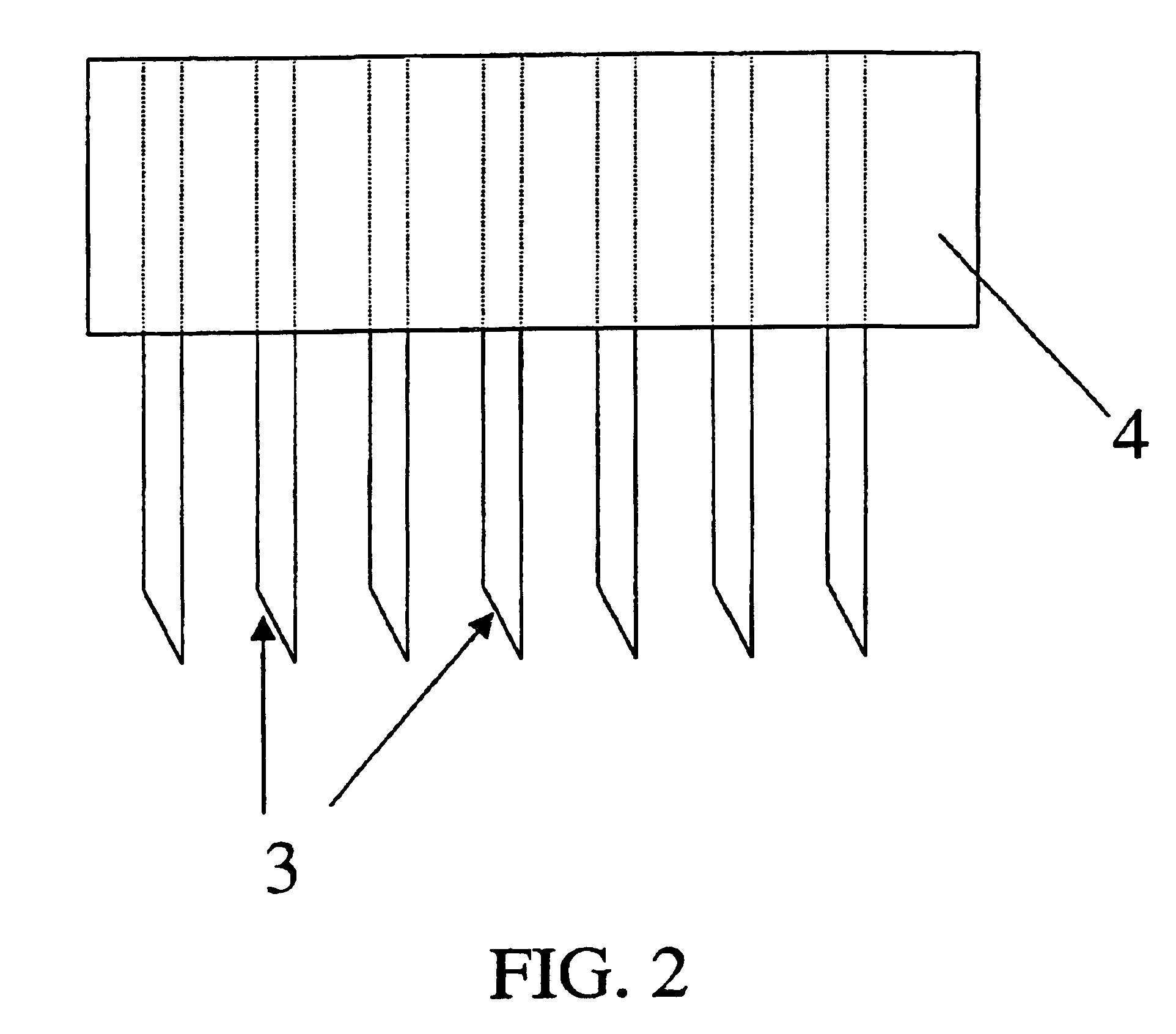Filamentary means for introducing agents into tissue of a living host
a technology of living host and tissue, applied in the field of tissue delivery, can solve the problems of limited flexibility of the device, affecting the feasibility and outcome of the procedure, and early implantable devices were not bioabsorbable, and achieve the effect of facilitating new bone formation
- Summary
- Abstract
- Description
- Claims
- Application Information
AI Technical Summary
Benefits of technology
Problems solved by technology
Method used
Image
Examples
example 1
Porous Coated Wires for Implantation of Follicle Progenitor Cells
[0067]An array of 21 wires, 0.0035 inches in diameter (nickel-chromium alloy, California Fine Wire Co., Grover Beach, Calif. 93433), was made by imbedding the wires in epoxy resin contained in the cut-off end of a tuberculin syringe. The wires were first placed in a 2 mm thick disc with 0.0063 inch diameter holes arranged in a pattern of one surrounded by 7 surrounded by 13. The wires were pushed into the disc until flush with the surface. The opposite surface had various lengths of wire protruding. This surface was placed in contact with the liquid epoxy resin mixture such that the protruding wires became imbedded. The surface of the disc in contact with the epoxy was first coated with a thin layer of petrolatum to prevent adhesion. Upon curing of the epoxy resin, the disc was pulled off to expose 21 wires extending exactly 2 mm from the surface of the 4.5 mm diameter plug of epoxy resin.
[0068]A mixture of poly(dl-lac...
example 2
Use of the Device of EXAMPLE 1 to Produce New Hair Follicles
[0070]The device of Example 1 is soaked in ethanol for 5 minutes and then rinsed with sterile water. The excess water is removed from the porous structure by blotting with a sterile, lint-fee surgical sponge. This process serves both to sterilize the polymer and to improve the ability of cells to be wicked rapidly and completely into the porous polymer.
[0071]Human dermal papilla cells that have been multiplied in culture are collected and resuspended in an isotonic buffer solution at approximately ten million cells per cubic centimeter. The pre-wet implant is then dipped into the suspension of cells and immediately injected into human skin where the growth of hair is desired.
[0072]Prior to implantation, the skin is wiped with gauze soaked in 70% isopropanol and then wiped with gauze soaked in Betadine™. Lidocaine cream is then applied to the skin and covered with a Tegaderm™ dressing for a minimum of one hour. This pre-impl...
example 3
Porous Scaffold for Tissue-Engineered Bone
[0075]Poly(70%-L-lactide-co-30%-d,l-lactide) obtained from Purac Biochem, b.v. (Gorinchem, Holland) is melt blended at about 170° C. with 5% by weight azodicarbonamide (Aldrich Chemical Co.) and pelletized. A proprietary bioabsorbable glass fiber produced by MO-SCI Corp. (Twitty Industrial Park, Rolla, Mo. 65401) is obtained as a monofilament single strand that is 100 microns in diameter.
[0076]A cladding extrusion die is made such that the 100 micron diameter fiber can pass through the die while polymer is extruded to cover and clad the moving fiber. The polymer / azodicarbonamide blend is extruded as a cladding on the glass to give a cross-sectional area ratio of 2:1 core to sheath.
[0077]The fiber is cut into 3 to 5 millimeter lengths and added to a beaker of water with stirring. The resultant slurry is then poured onto a Buchner funnel equipped with a coarse glass frit and the water allowed to drain. This produces a “wet-laid” non-woven web ...
PUM
 Login to View More
Login to View More Abstract
Description
Claims
Application Information
 Login to View More
Login to View More - R&D
- Intellectual Property
- Life Sciences
- Materials
- Tech Scout
- Unparalleled Data Quality
- Higher Quality Content
- 60% Fewer Hallucinations
Browse by: Latest US Patents, China's latest patents, Technical Efficacy Thesaurus, Application Domain, Technology Topic, Popular Technical Reports.
© 2025 PatSnap. All rights reserved.Legal|Privacy policy|Modern Slavery Act Transparency Statement|Sitemap|About US| Contact US: help@patsnap.com



